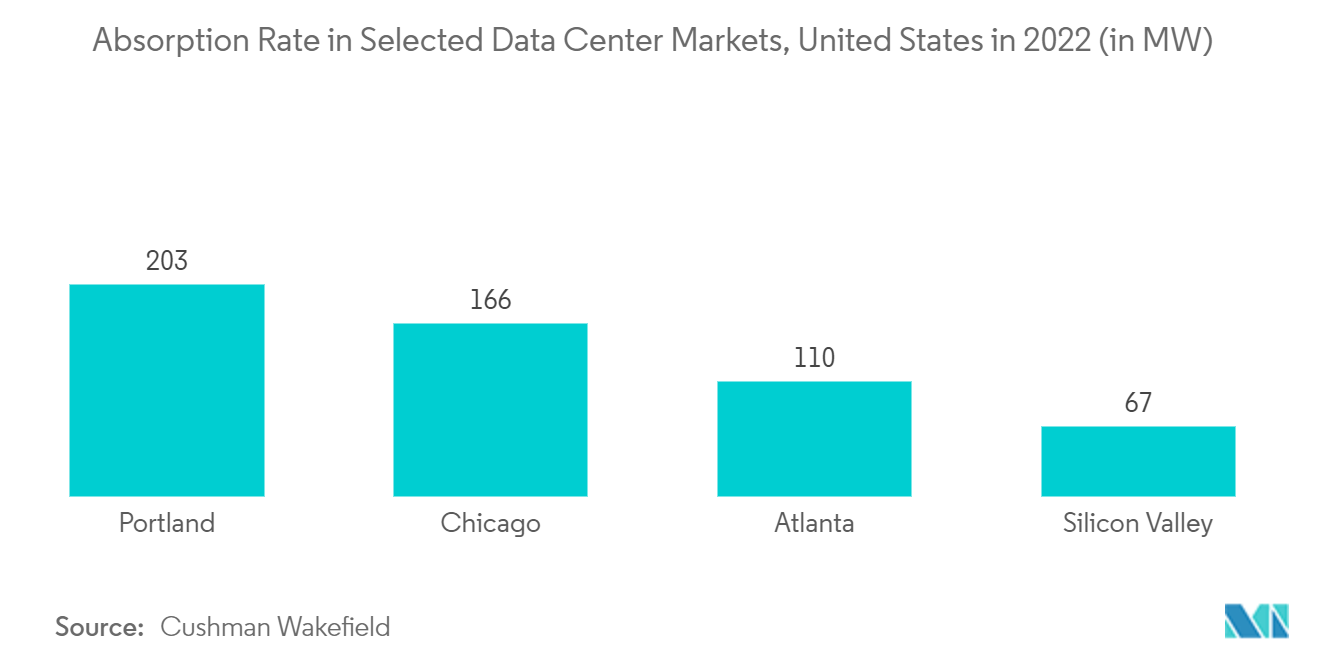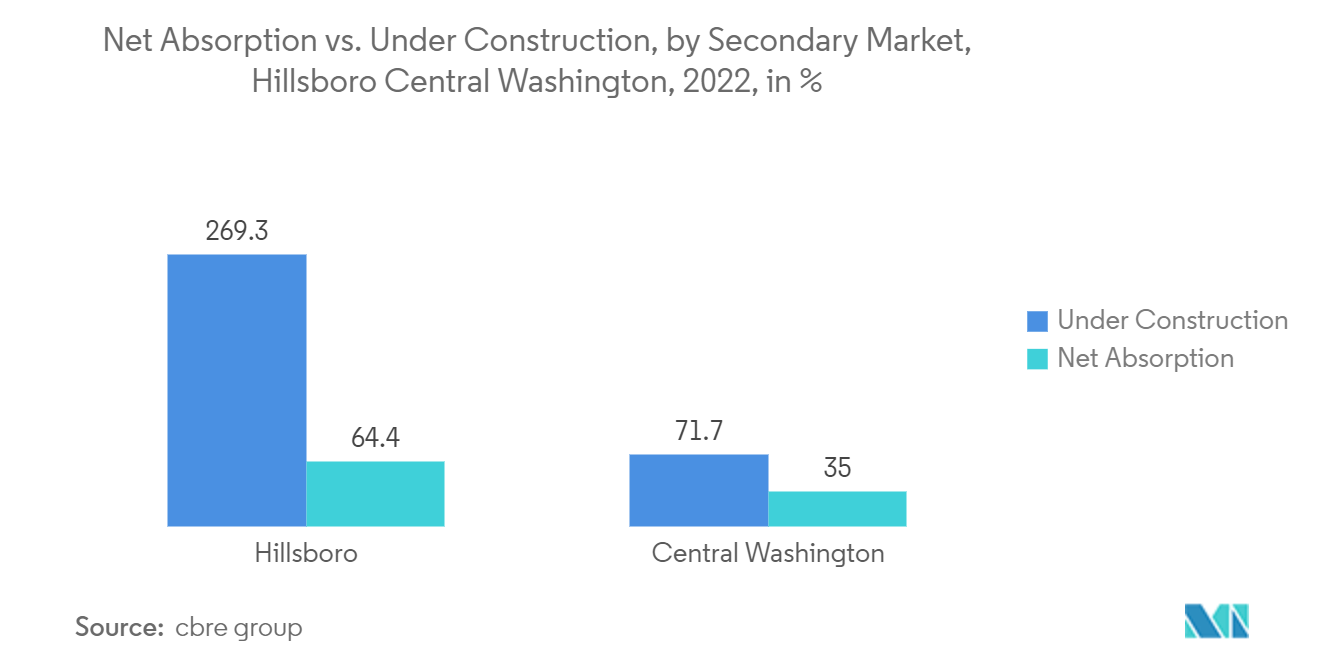Market Trends of Northwest Data Center Industry
Rising Adoption of Hyperscale Data Centers
- Portland/Hillsboro is becoming increasingly popular because of its low-cost electricity and tax breaks. In addition to the current inventory of 63.4 MW, the market has 18 MW under construction. With new construction accounting for 28% of its existing stock, it is one of the fastest-growing markets in the United States and Canada. Hillsboro has an appealing property tax abatement program and low-cost renewable energy utility programs, making it a popular destination for businesses looking to offset their data costs.
- The power needs of data center users will increase, resulting in more extensive leasing agreements in 2023. Power supply issues will be the main barrier to new growth in several key markets, such as Northern Virginia, Hillsboro, and Silicon Valley. As a result, secondary markets with more affordable land, more abundant power, and advantageous tax incentives will see an increase in hyper scale demand.
- Washington's accessible rural real estate also lends itself to massive data center footprints. SDC Quincy offers 528,000 square feet of purpose-built colocation space spread over three strategically constructed buildings, allowing users of nearly any size, including hyperscalers, to benefit from modular efficiency. There are options for built-to-suit powered shells, hybrid configurations, and wholesale turnkey colocation modules, all maintained by an award-winning critical environment management staff.
- With over 1,200 technology enterprises in the metro, technology is essential to the city's economy. Because of the high number of technological enterprises, the Portland area has earned the moniker Silicon Forest. The site also houses facilities for software companies and internet startup companies, some of which are backed by local seed funding organizations and business incubators. Intel, the world's largest maker of computer components, employs about 15,000 people in the Portland area, with many locations near Hillsboro, west of downtown Portland.

Digitilization will drive the Market
- The government and defense sector is expected to generate significant demand for data center construction in the country over the forecast period. Government initiatives such as the Federal Cloud Computing Strategy - Cloud Smart and digitalizing public accessibility platforms are the greatest sources of demand for data centers nationwide.
- The COVID-19 pandemic catalyzed to advance of the digitization of government, public and defense sectors in the region. Further, the ever-evolving citizen's demand for more efficient and digital government is expected to drive the demand for data centers over the forecast period. With the proliferation of digital transformation, the government and defense sector is witnessing exponential data growth. Meeting the growing need to store, process, and analyze ever-increasing volumes of data, is driving the need for data center construction in the federal government and defense of the country.
- In the upcoming years, the demand for data center building is anticipated to be driven by several government programs designed to increase cloud use in federal government organizations. For instance, the US government unveiled The Cloud Smart Strategy in October 2018. The Cloud Smart plan offers further direction on workforce skills, procurement, and security to promote cloud adoption and deployment in the Federal Government. To modernize federal information technology (IT), increase citizen-facing services and accessibility, and protect cybersecurity, adopting the Federal Cloud Computing Strategy, often known as Cloud Smart, is essential.
- The usage of smartphones and social media, the country's government's emphasis on the digital economy, and the rise in technology-driven businesses led to rapid data usage and storage growth in the IT sector. Data centers are becoming increasingly crucial parts of the IT infrastructure.


